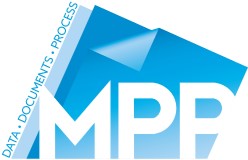Considering forthcoming GDPR regulations, the question of print and document management security is becoming a hot topic. A great deal of focus regarding data is placed on the storing and use of it and yet very little attention is paid to that same data whilst it is in the ether or when it is recreated in physical/hard print format. We have previously blogged about securing the print process in and around the end point i.e. at the printer, but what about the process up to the point of print?
In most organisations network security is taken seriously with thousands invested in it and yet this investment could be put to greater use to secure documents in the print queue, introduce print efficiencies and further reduce the security risk at the end point.
Over the years there has been a swing between centralised and decentralised print, meaning fewer people have dedicated printers immediately near their regular place of work. Add to this a more mobile workforce, global operations and multiple offices and you soon understand the risk that is posed by printing to the wrong machine in the wrong office at the wrong time. Furthermore, the traditional view of localised printing does not offer any flexibility to the individual concerned or reflect the fact that different job roles may require more personalised print settings, specific to the work being undertaken.
Making your print infrastructure more connected will solve all of these issues whilst further securing important data and files. Technology and software like ‘follow me’ print utilises the flexibility and security of the network infrastructure to enable on demand printing – allowing users to print the files they need, when and where they need it and only if they need it. Instead of an immediate print to device function, files are stored in the cloud or on a server, which forms part of the network and is covered by the investment in network security. The document then sits there, safe, until such time as it is called down to a device by the relevant user. The user specifies the device and the print settings at that point in time or if working across a range of connected devices can simply have a personalised print setting which identifies the user, file and device and prints the file accordingly.
As well as answering print security issues, technology like follow me print can help to reduce print volumes and therefore cost. So, if your print infrastructure is not connected and using the latest technologies, this may be another risk when GDPR regulations come into force in 2018.
